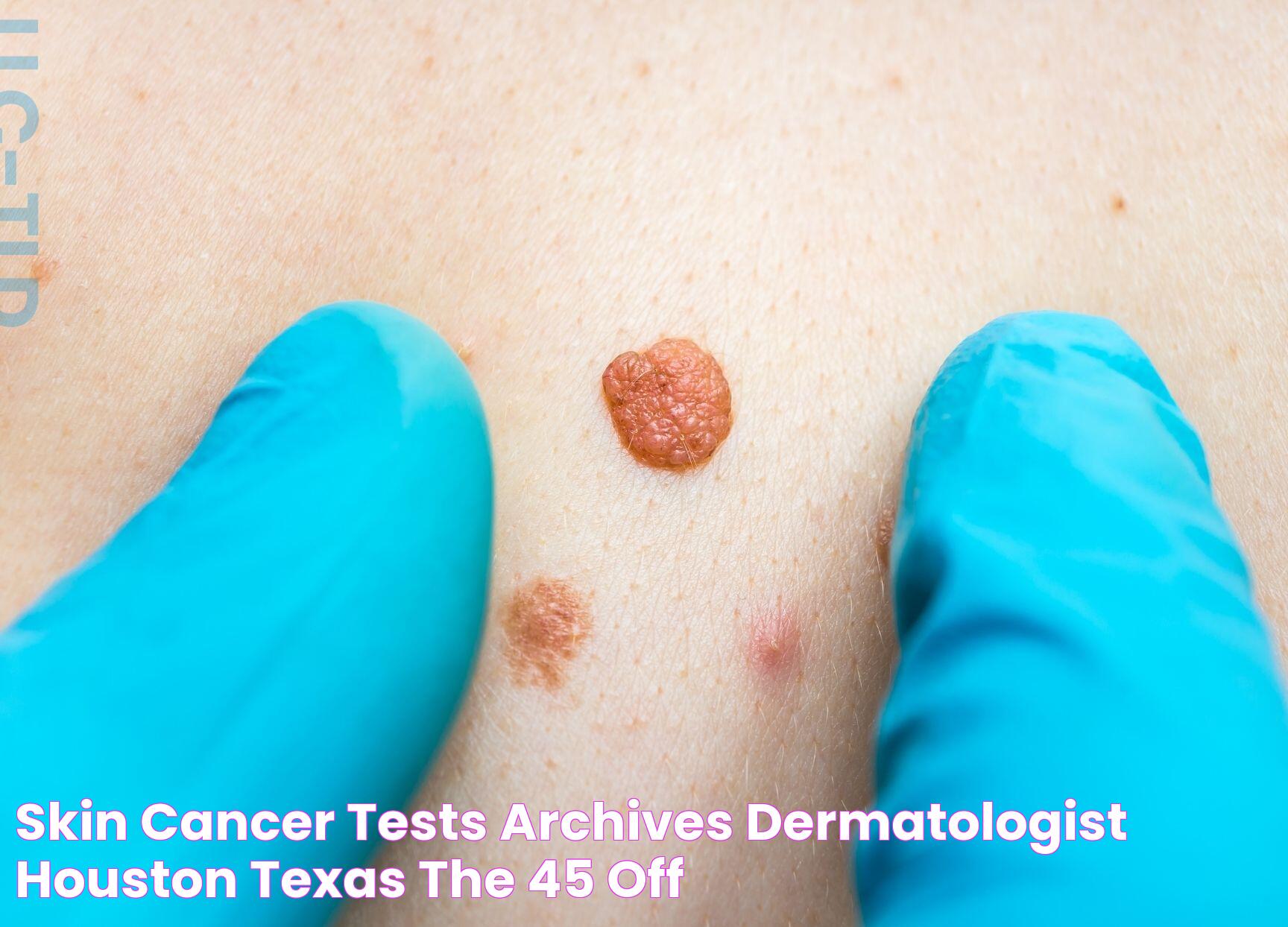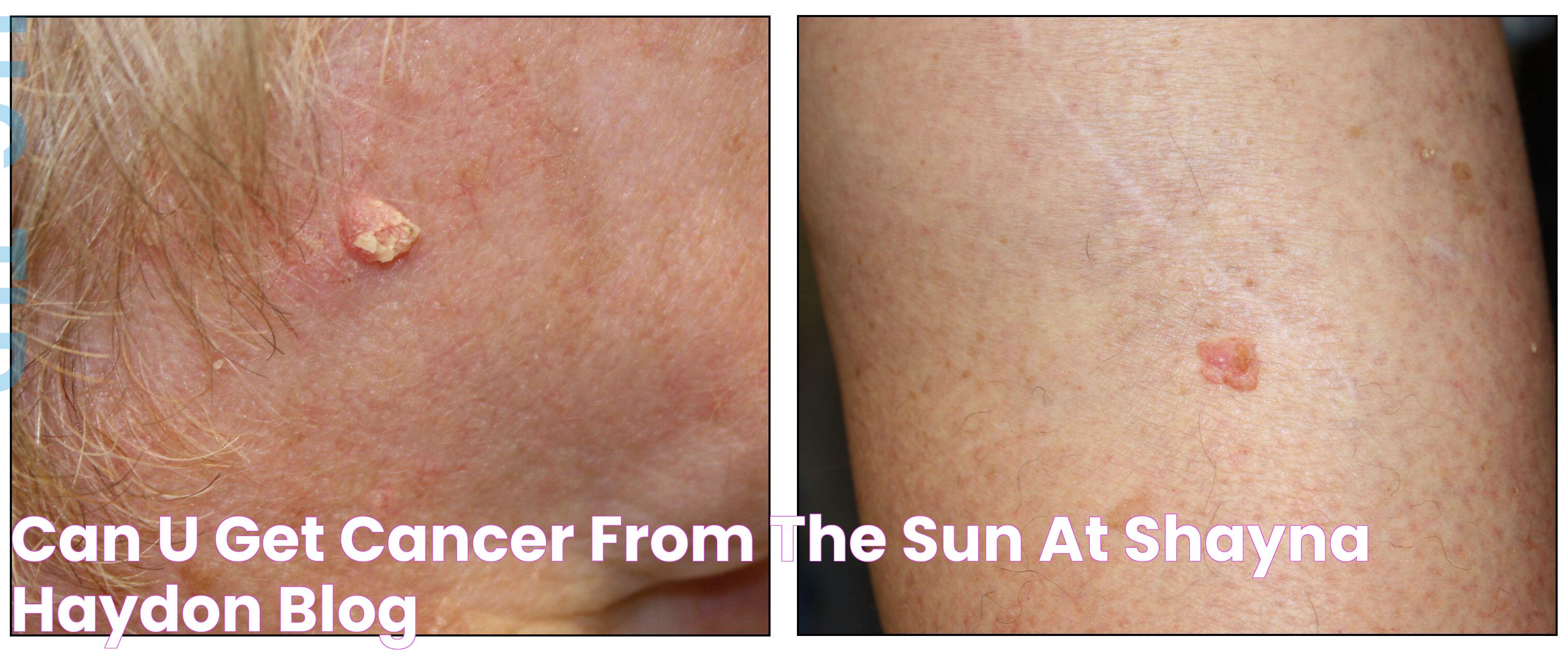Skin tags are common and typically harmless growths that many people find on their bodies. However, there can be instances where these small, benign lesions could potentially signal more serious health concerns, such as skin cancer. This is why it's crucial to understand the difference between benign skin tags and those that might be cancerous. In this comprehensive guide, we will delve into the distinguishing features of cancerous skin tags, providing you with valuable insights and pictures to help identify potential risks.
Skin cancer is a prevalent condition, and early detection plays a vital role in successful treatment. Many individuals may not be aware that what they consider a simple skin tag could, in rare cases, be an indicator of skin cancer. By examining cancerous skin tags pictures, one can better appreciate the differences and potential warning signs. This knowledge empowers individuals to seek medical advice when necessary, potentially catching skin cancer in its earliest stages.
In the following sections, we will explore various aspects of skin tags, particularly focusing on identifying cancerous varieties. We will cover the types of skin tags, common symptoms, causes, prevention strategies, and treatment options. Additionally, we'll answer frequently asked questions to address common concerns and misconceptions about cancerous skin tags. We aim to provide a thorough understanding of this topic, encouraging proactive healthcare and awareness.
Read also:The Effects And Treatment Of Hyperpigmentation On The Lower Level Of Skin
Table of Contents
- What are Skin Tags?
- Why Do Skin Tags Form?
- How to Identify Cancerous Skin Tags?
- Are Skin Tags a Sign of Skin Cancer?
- Common Symptoms of Cancerous Skin Tags
- Pictures of Cancerous Skin Tags
- Treatment Options for Cancerous Skin Tags
- When to See a Doctor for Skin Tags?
- How to Prevent Cancerous Skin Tags?
- Risk Factors Associated with Skin Tags
- Can Cancerous Skin Tags Recur After Removal?
- Lifestyle Changes to Reduce Skin Tags
- Home Remedies for Skin Tags
- Frequently Asked Questions
- Conclusion
What are Skin Tags?
Skin tags, medically known as acrochordons, are small, soft, benign growths that often appear on the skin's surface. These harmless lesions are usually flesh-colored and can vary in size from a couple of millimeters to a few centimeters. They are most commonly found on areas where the skin folds, such as the neck, armpits, groin, and under the breasts.
The formation of skin tags is generally attributed to friction, as they often appear in areas where skin rubs against skin or clothing. While anyone can develop skin tags, they are more prevalent in adults and those with certain medical conditions, such as obesity and diabetes. Skin tags are not dangerous, but they can become irritated if snagged by jewelry or clothing.
Why Do Skin Tags Form?
The exact cause of skin tag formation is not entirely understood, but several factors are believed to contribute to their development:
- Friction: Continuous rubbing of skin against skin or clothing can lead to the formation of skin tags.
- Genetics: A family history of skin tags can increase the likelihood of developing them.
- Hormonal Changes: Pregnancy and other hormonal shifts can contribute to the growth of skin tags.
- Insulin Resistance: Conditions like diabetes can be associated with the occurrence of skin tags.
- Age: Skin tags are more common in middle-aged and older adults.
How to Identify Cancerous Skin Tags?
While most skin tags are benign, it's important to recognize characteristics that might suggest a cancerous change:
- Rapid growth or changes in size or color.
- Irregular borders or asymmetry.
- Bleeding, itching, or a change in sensation.
- Multiple colors or uneven pigmentation.
If you notice any of these changes, it is crucial to consult a healthcare professional for further evaluation. A dermatologist may perform a biopsy to determine if the skin tag is cancerous.
Are Skin Tags a Sign of Skin Cancer?
Most skin tags are not indicative of skin cancer. However, in rare cases, what appears to be a skin tag could potentially be a form of skin cancer. Types of skin cancer, such as basal cell carcinoma, squamous cell carcinoma, and melanoma, can sometimes resemble skin tags.
Read also:In Vitro A Closer Look At Its Impact And Applications
It's essential to monitor skin tags for any unusual changes and seek medical advice if you notice anything suspicious. Early detection and treatment are vital in managing skin cancer effectively.
Common Symptoms of Cancerous Skin Tags
Recognizing the common symptoms of cancerous skin tags can aid in early detection:
- Persistent growth that does not stop.
- Changes in texture, becoming rough or scaly.
- Painful or tender to touch.
- Development of a sore that does not heal.
These symptoms warrant a professional evaluation to rule out skin cancer and ensure appropriate treatment is administered.
Pictures of Cancerous Skin Tags
Visual aids can be incredibly helpful in distinguishing between benign and potentially cancerous skin tags. Here are some common characteristics to look for when examining cancerous skin tags pictures:
- Irregular shapes and uneven edges.
- Variegated colors, such as shades of brown, black, or red.
- Uneven surface texture or ulceration.
These visual cues can help you identify potential issues, prompting you to seek medical advice if necessary.
Treatment Options for Cancerous Skin Tags
Should a skin tag be identified as cancerous, several treatment options are available depending on the type and stage of cancer:
- Surgical Removal: The most common method, involving excision of the lesion.
- Radiation Therapy: Used for certain types of skin cancer to kill cancer cells.
- Cryotherapy: Freezing the lesion with liquid nitrogen.
- Topical Treatments: Application of medicated creams or ointments.
Consultation with a dermatologist is crucial to determine the appropriate treatment plan.
When to See a Doctor for Skin Tags?
It's advisable to consult a healthcare professional if you notice any of the following:
- Rapid changes in size, color, or shape of a skin tag.
- Persistent irritation, bleeding, or pain.
- Multiple skin tags appearing suddenly.
Early consultation can help rule out cancer and provide peace of mind.
How to Prevent Cancerous Skin Tags?
While not all skin tags can be prevented, certain measures can reduce the risk:
- Maintain a healthy weight to reduce friction.
- Keep skin clean and dry, especially in fold areas.
- Avoid tight clothing that can irritate the skin.
- Use sunscreen to protect against UV radiation.
Risk Factors Associated with Skin Tags
Several risk factors can increase the likelihood of developing skin tags:
- Family history and genetic predisposition.
- Obesity and associated skin friction.
- Hormonal imbalances, such as those during pregnancy.
- Chronic conditions like diabetes and insulin resistance.
Can Cancerous Skin Tags Recur After Removal?
While removal of a cancerous skin tag is usually effective, there is a possibility of recurrence, particularly if underlying risk factors remain unaddressed. Regular monitoring and follow-up with a healthcare provider can help manage and prevent recurrence.
Lifestyle Changes to Reduce Skin Tags
Implementing certain lifestyle changes can help reduce the occurrence of skin tags:
- Adopt a balanced diet to maintain a healthy weight.
- Incorporate regular exercise to reduce skin friction.
- Practice good skincare, including moisturizing and cleansing.
- Manage chronic health conditions with professional guidance.
Home Remedies for Skin Tags
Several home remedies are believed to aid in the removal of skin tags, though they should be approached with caution:
- Apple cider vinegar application for drying out the tag.
- Tea tree oil for its antimicrobial properties.
- Over-the-counter skin tag removal products.
Always consult a healthcare provider before attempting home remedies, especially if you suspect a tag may be cancerous.
Frequently Asked Questions
1. Can a skin tag turn cancerous?
Generally, skin tags are benign and do not turn cancerous. However, any significant changes in appearance should be evaluated by a professional.
2. How can I tell if a skin tag is cancerous?
Look for rapid growth, changes in color or size, irregular borders, and any associated symptoms like bleeding or itching.
3. Are there any risks associated with removing skin tags at home?
Yes, attempting to remove skin tags at home can result in infection, scarring, or improper removal. Always consult a healthcare provider for safe treatment options.
4. How common are cancerous skin tags?
Cancerous skin tags are rare. However, vigilance is important to differentiate between benign and potentially malignant growths.
5. Do skin tags reappear after removal?
Skin tags can recur, especially if underlying risk factors are not managed. Consistent monitoring can help detect any new growth early.
6. Should I be worried about skin tags if I have a family history of skin cancer?
While skin tags are typically harmless, a family history of skin cancer warrants careful observation and regular check-ups with a healthcare provider.
Conclusion
In conclusion, understanding the nuances between benign and cancerous skin tags is crucial for maintaining skin health. By familiarizing yourself with the characteristics of cancerous skin tags and regularly monitoring any changes, you can take proactive measures to ensure early detection and treatment. Whether through professional evaluation or self-awareness, staying informed about potential skin cancer indicators can significantly impact your health journey. Remember, when in doubt, always consult a healthcare professional to address any concerns or questions regarding skin tags.

